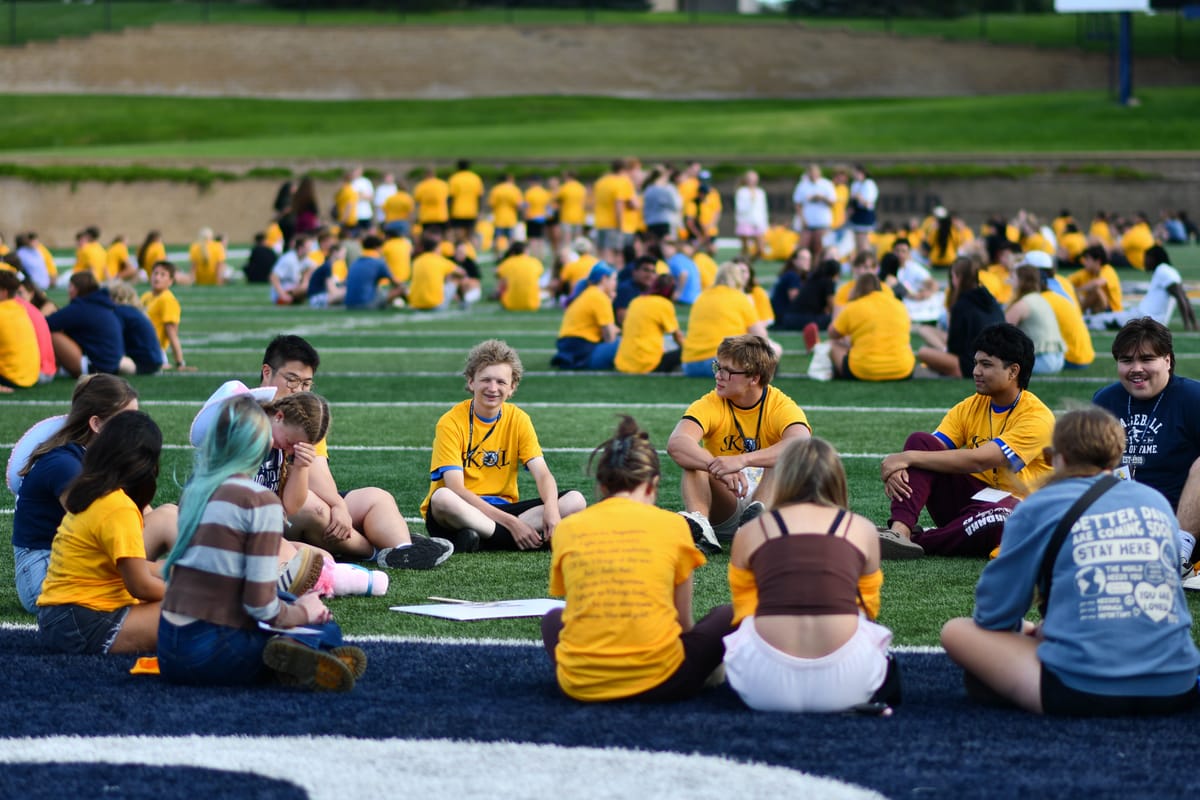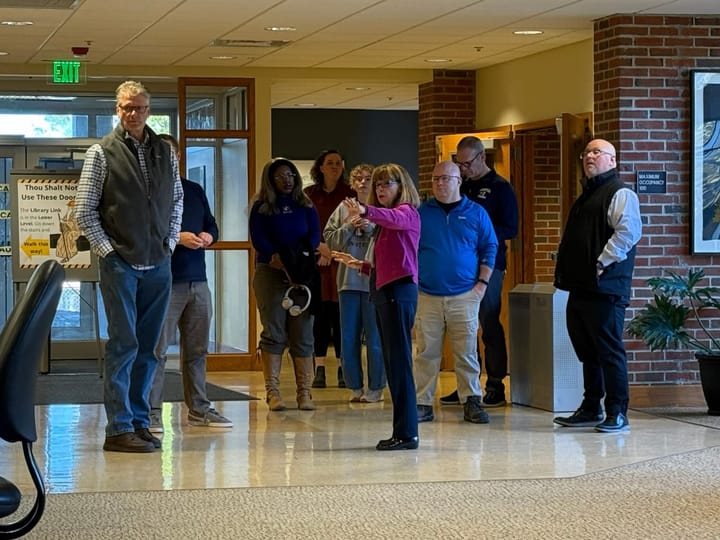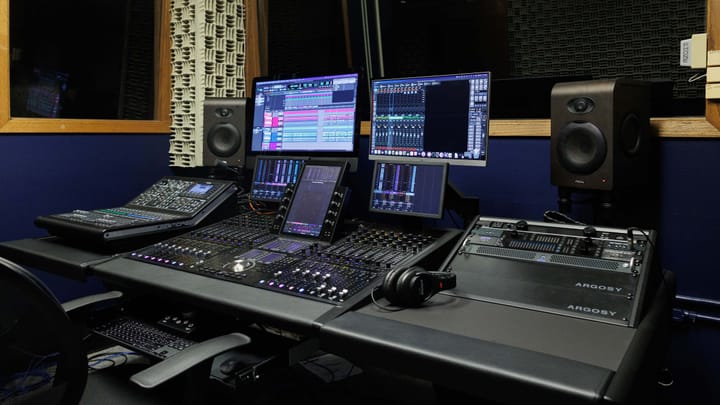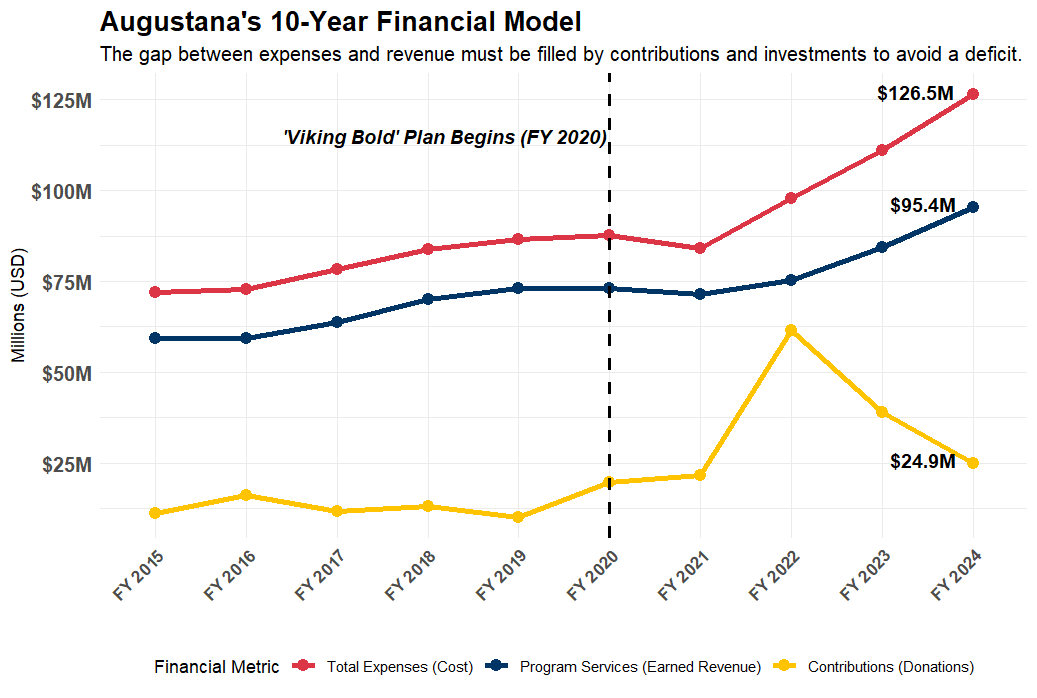Augustana adapts to largest freshman class ever

A record 615 first-years boosted Augustana’s enrollment to 2,548 this fall. This marks a significant step in the university’s goal of enrolling 3,000 students by 2030 as part of the Viking Bold strategic plan.
Adam Heinitz, associate vice president of enrollment management, credited the growth to a “university-wide effort,” citing new educational programs, upgraded facilities, Division I hockey and other factors. He said the rise has been years in the making.
“It starts with the vision that President Herseth Sandlin and the Board of Trustees have developed for Augustana,” Heinitz said. “They knew the direction and the growth that was happening in Sioux Falls and in this region, and so they made some really important strategic investments and decisions years ago that we’re starting to see play out in terms of enrollment.”
Freshman computer science and software engineering major Sebastian Castle said he wanted two things from a potential school: a computer science program and choir.
For Castle, part of what distinguished Augustana was the personal touch in admissions; he even recalled getting ice cream with his admissions counselor to talk about his future.
“It was like, ‘Hey, let’s go get ice cream and chat,’ and it wasn’t super stressful or official,” Castle said. “[The admissions process] just was way more personal, and that made it super easy to do.”
The increase in student population is now testing campus infrastructure in new ways, forcing many parts of campus to adapt to keep up with the demand of a larger student body.
For Registrar Ann Kolbrek the biggest challenge is clear.
“Classroom space, 100%,” Kolbrek said. “Faculty have been wonderful partners about maybe upping the caps of their courses and making adjustments but they can only do so if the physical room accommodates them.”
John Babb, assistant professor of history has experienced the effects of a larger freshman class firsthand. His course West in the World is a popular entry-level class many underclassmen take to fulfill their general education requirements.
“I have record-breaking waitlists,” Babb said. “This fall, I had 21 students on the waitlist of a class size of 30.”
For Babb, an adjunct professor, the boom in enrollment has a personally pragmatic silver lining: job security.
“As long as there’s more students, there’s more demand for additional faculty,” he said. “In the absence of full-time tenure-track positions being open, they’re going to keep hiring adjuncts.”
Outside of the classroom, Whitney Jibben, the director of housing, dining and facility services has felt the impact of Augustana’s larger student population in numerous ways.
Even with the reopening of Tuve Hall providing an additional 82 beds, the most significant strain has been on housing.
Jibben said that unlike previous years where there was more “wiggle room,” the university has very little flexibility this fall.
Most dorms opened at or above capacity, making it more difficult to reassign rooms when roommate conflicts arise.
Jibben explained that “more people on campus just means a little bit more wear and tear on our facilities,” which has led to a need for more staff.
The university began the year with five custodial openings. While two of those positions have been filled, Jibben said they are still looking to hire for the three remaining openings.
The same pressure extends to the dining hall, which averages 1,900 meal swipes per day, up 36% from the 1,400 swipes per day in the spring.
At Viking Grounds, sophomore barista Trey Tumbleson estimated a 30-40% increase in customers during the daily “chapel rush,” the break between classes all students have from 9:50-11 a.m. For Tumbleson, the increased pace is welcome.
“I love seeing as many people as possible in the morning — I love having cups stacked up a little bit,” Tumbleson said. “But, I know a lot of my co-workers can get easily stressed, especially with the chapel rush.”
To help students avoid waiting in line, dining services also recently implemented mobile ordering at Viking Grounds through the Everyday app.
While acknowledging the staffing shortages and increased strain on facilities, Jibben retains a positive outlook.
“I think it’s a great problem to have,” Jibben said. “We’d much rather have a lot of students that want to be part of the community.”
With 2,143 undergraduates, Heinitz said Augustana is nearing its 2,200–2,400 target. If Augustana continues to enroll classes of around 600 students, it will reach its undergraduate goal.
Future growth toward the 3,000 student target is expected from graduate programs, projected to grow from 405 to 600–800 students.



